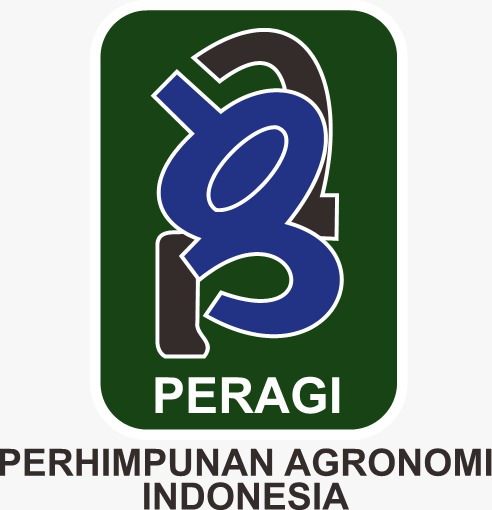Identification Of Diseases On Coffee Plant In Cangkringan, Sleman, Yogyakarta
Abstract
Many different kinds of plants, including coffee plants, are susceptible to disease. In Cangkringan, Sleman, Yogyakarta, this study aims to discover diseases. Compute the percentage of disease attacks, and determine the causes of diseases that affect coffee plants. The Central Laboratory of the Yogyakarta Institute campus is located in the Sleman Regency's Maguwoharjo District. The sample took place in the hamlets of Kopeng, Petung, and Gondang Pusung in the Cangkringan District, D.I. Yogyakarta. The research was done between March and September of 2021. The survey, collection, and identification of fungi that cause coffee plant illnesses in the field and laboratory were the research techniques used. Additionally, farmers who work on coffee plantations were interviewed. Descriptive analysis was done on observational data related to illness symptoms. According to data on environmental conditions in the three coffee plantations, Petung Hamlet had the highest elevation (875.7 masl), Kopeng Hamlet and Gondang Pusung Hamlet had the highest air temperature (27.9 °C), Gondang Pusung Hamlet had the highest air humidity (75%), Kopeng Hamlet had the highest irradiation intensity (1947 Lux), and the three hamlets' soil pH ranged from 5.5-7. A quantitative analysis of the illness attack rate was performed. On the macro- and micro-morphological characteristics of mushrooms, qualitative analysis was conducted. The findings revealed that fungi were to blame for four different types of coffee plant illnesses. These illnesses include sooty mildew, leaf spot, scurvy, and leaf rust (all caused by the fungus H. vastatrix) (Capnodium sp.). Kopeng Hamlet had the highest incidence of disease attacks, including 9.7% for leaf rust, 11.8% for leaf spots, 4.8% for black fungus, and 2.9% for sooty mildew.
Downloads
References
Alimuddin, S. N. F. (2021). Tingkat Ketahanan Klon Kopi Arabika Terhadap Penyakit Karat Daun (Hemileia vastatrix) Di Toraja Utara. Universitas Hasanuddin.
Amaria, W., & Harni, R. (2012). Penyakit Karat Daun Pada Tanaman Kopi Dan Pengendaliannya. Bunga Rampai Inovasi Teknologi Tanaman Kopi Untuk Perkebunan Rakyat, 115–120.
BPS. (2021). Statistik Kopi Indonesia 2020 ( dan P. Direktorat Statistik Tanaman Pangan, Hortikultura (ed.)). Badan Pusat Statistik Indonesia.
Chomnunti, P., Hongsanan, S., Aguirre-hudson, B., Tian, Q., Peršoh, D., Dhami, M. K., Alias, A. S., Xu, J., Liu, X., Stadler, M., & Hyde, K. D. (2014). The Sooty Moulds. Fungal Diversity, 66(1), 1–36. https://doi.org/10.1007/s13225-014-0278-5
Defitri, Y. (2016). Pengamatan Beberapa Penyakit Yang Menyerang Tanaman Kopi (Coffea sp.) Di Desa Mekar Jaya Kecamatan Betara Kabupaten Tanjung Jabung Barat. Jurnal Media Pertanian, 1(2), 78–85.
Hadi. (2014). Pedoman Teknis Budidaya Kopi Yang Baik (Hadi, H. B. Hudoro, M. Novariyanthy, I. I. Tanjung, Mutowil, M. I. Soedjana, & I. Mulyono (eds.)). Kementerian Pertanian.
Harni, R., Samsudin, Amaria, W., Indriati, G., Soesanthy, F., Khaerati, Taufiq, E., Hasibuan, A. M., & Haspari, A. D. (2015). Teknologi Pengendalian Hama Dan Penyakit Tanaman Kopi. In Badan Penelitian dan Pengembangan Pertanian. Indonesian Agency For Agricultural Research And Development (IAARD) Press.
Irma, D. (2022). Serangan Karat Daun Kopi (Hemileia vastatrix B et Br) Pada Tanaman Kopi Arabika Di Kecamatan Bukit Kabupaten Bener Meriah. Universitas Sumatera Utara.
Mulyani, S., & Nildayanti. (2018). Inventarisasi Hama Dan Penyakit Pada Pertanaman Kopi Organik. J. AgroPlantae, 7(2), 14–19.
Phengsintham, P., Braun, U., Ehc, M., Cai, L., & Kd, H. (2013). Monograph of Cercosporoid fungi from Thailand. Plant Pathology & Quarantine, 3(2), 67–138. https://doi.org/10.5943/ppq/3/2/2
Semangun, H. (2000). Penyakit-penyakit Tanaman Perkebunan Di Indoensia. Gadjah Mada University Press.
Sopialena. (2017). Segitiga Penyakit Tanaman. In Susilo (Ed.), Mulawarman University Press (Desember 2). Mulawarman University Press.
Sutarman. (2017). Dasar-dasar Dasar Ilmu Penyakit Tanaman. UMSIDA PRESS.
Talhinhas, P., Batista, D., & Es, D. I. N. I. Z. (2017). The coffee leaf rust pathogen Hemileia vastatrix : one and a half centuries around the tropics. Molecular Plant Pathology, 18(8), 1039–1051. https://doi.org/10.1111/mpp.12512
Tjokrosoedarmo, A.-H. (1996). Jamur upas (Upasia salmonicolor) Pada Daun Kopi Di Pagilaran. Jurnal Perlindungan Tanaman Indonesia, 2(1), 40–43.
Yuliana, Himawan, A., & Kristalisasi, N. (2022). Identification of Endophytic Fungi on Healthy and Disease Stem of Vanilla Plants ( Vanilla planifolia ) Caused by Stem Rot Disease. JUATIKA: Jurnal Agronomi Tanaman Tropika, 4(2), 149–157. https://doi.org/https://doi.org/10.36378/juatika.v4i2.2367
Copyright (c) 2023 Yohanes Yolland Aliandu, Achmad Himawan, Elisabeth i Nanik Kristalisas

This work is licensed under a Creative Commons Attribution 4.0 International License.
Authors who publish with Jurnal Agronomi Tanaman Tropika (JUATIKA) agree to the following terms:
Authors retain copyright and grant the Jurnal Agronomi Tanaman Tropika (JUATIKA) right of first publication with the work simultaneously licensed under a Creative Commons Attribution License (CC BY 4.0) that allows others to share (copy and redistribute the material in any medium or format) and adapt (remix, transform, and build upon the material for any purpose, even commercially) with an acknowledgment of the work's authorship and initial publication in Jurnal Agronomi Tanaman Tropika (JUATIKA).
Authors are able to enter into separate, additional contractual arrangements for the non-exclusive distribution of the journal's published version of the work (e.g., post it to an institutional repository or publish it in a book), with an acknowledgment of its initial publication in Jurnal Agronomi Tanaman Tropika (JUATIKA). Authors are permitted and encouraged to post their work online (e.g., in institutional repositories or on their website) prior to and during the submission process, as it can lead to productive exchanges, as well as earlier and greater citation of published work.







 More Information
More Information



